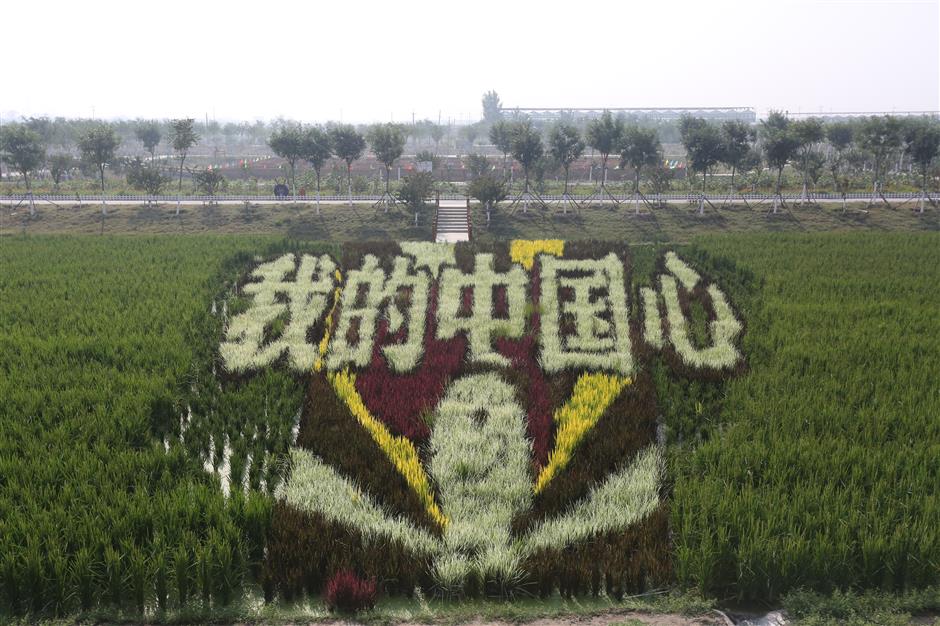A prosperous picture of paddies

One of the “paddy pictures” with various types of paddy is showed in Tianjing.
Standing on a 26-meter-high viewing tower, a huge picture depicting a cartoon character with a thumb-up comes into view. It is actually made of paddy with different colors.
By planting with various types of paddy, a team from the Sinochem Agriculture “drew” several “paddy pictures” to celebrate this year’s harvest in a demonstration farm in northern China’s Tianjin.
Chen Wei, manager of a Tianjin-based technical service center affiliated to the Sinochem Agriculture, said the farm covers more than 1,300 hectares of paddy fields. It is expected to reap about 40 kilograms of rice per hectare this year, up 40 percent year on year.
High-tech is the key to the yield increase.
Based on precise planting and management techniques, the whole process of rice growing from turning over the soil to fertilizing and transplanting to reaping has been mechanized and digitalized.
The farm uses unmanned aerial vehicles, unmanned transplanters, intelligent irrigation systems and remote satellite sensing technology so that only about a dozen people can manage the large paddies.
The intelligent irrigation system can monitor the salinity of water in real-time. When the data exceeds a certain level, the information will be transmitted to the management platform.
“Operators only need to click on the button to open the irrigation valves and more water will flow into the field,” Chen said, adding that operators can finish the series of operations in just a few seconds.
Operators can also remotely control an unmanned transplanter, which can plan the path, reverse direction and transplant rice seedlings.
“We take advantage of technologies including the Internet of Things, artificial intelligence and cloud computing to collect dynamic information, and the satellite remote sensing data will be updated every five days,” Chen said.
In addition, if operators find pests and diseases in the paddy field, they could upload photos to the platform via smartphones and experts can find solutions together.
The service center also set up training classes for local farmers to learn smart paddy planting techniques.
“So far, we have trained about 1,000 villagers in the Wangwenzhuang Township where the farm is,” Chen said.
Li Tingfu, a 65-year-old villager, said he once had to endure back pain after a day in the paddy fields.
But with the new tech, the yield has increased from 16.7 kilograms per hectare to 33.3 kilograms.
“We can earn more money now,” he said. The farm also encourages villagers to raise crabs, fish and frogs in fields to make more money.

One of the “paddy pictures” with various types of paddy is showed in Tianjing.















